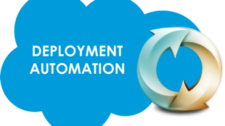CI/CD series – Dresma: Embracing hyper reactive development
Source:-computerweekly.comThis is a guest post for the Computer Weekly Developer Network in our Continuous Integration (CI) & Continuous Delivery (CD) series. He says that says that CI/CD has meant that in large organisations, where the software deployment process once took days, today, an entire build and test processes each take about five minutes — and when deployments are triggered they take about an additional 10 minutes. Sinha writes as follows… Amazon managed to decrease the number of simultaneous outages and
Read more




